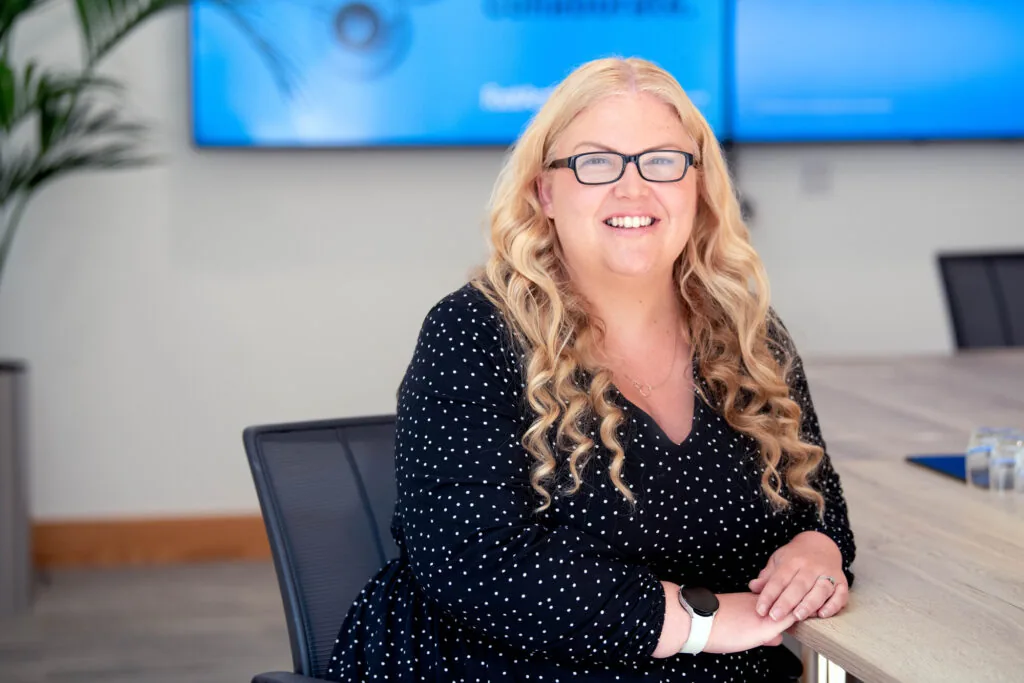
Principal Director - Chartered Trade Mark Attorney
Intellectual Property | Charities
This website will offer limited functionality in this browser. We only support the recent versions of major browsers like Chrome, Firefox, Safari, and Edge.

We have put together a useful guide which answers the most common questions about the UK trade mark registration process. Below you will find a comprehensive list of trade mark related questions and answers that our experts support clients on.
Under UK law, a trade mark is any sign capable of being represented graphically and can distinguish the goods or services of one undertaking from those of another. In other words, a trade mark is a badge of origin that enables customers to identify certain goods and/or services as coming from a particular entity.
Trade marks are most commonly a logo that an entity uses or a word, phrase or slogan, like ‘FOOT ANSTEY’ and ‘POWERING YOUR AMBITION’. However, the definition of a trade mark is broad enough to cover a range of other marks that can be represented – such as a symbol, smell, gesture, pattern, colour shade and the shape and packaging of goods. There are certain restrictions on what you can register – our pre-filing advice on registrability would seek to highlight this.
A trade mark is protected in relation to a specified set of goods or services which are classified according to 45 classes.
Before an application is filed, a detailed trade mark specification must be drawn up, it is important that this is done comprehensively and broadly. We often see trade marks filed by companies which do not cover their core goods and services yet alone what they might extend to in the future.
For most marks and in very general terms, a trade mark will enable the holder to prevent a third party from using or registering:
Trade marks which have a strong reputation can enjoy broader rights to prevent others from using or registering an identical or similar mark for similar or dissimilar goods and services to those covered by the trade mark in certain circumstances.
Trade marks are territorial rights so they need to be filed at the trade mark registry in every jurisdiction where protection is required. For example, to obtain a UK trade mark, an application would need to be filed at the UK Intellectual Property Office. Whilst it is possible to file separate trade marks in each of the 27 member states of the EU, it is also possible to obtain one unitary trade mark that provides protection across all member states by filing a single trade mark at the EU Intellectual Property Office.
In addition, an international trade mark can be filed designating protection in certain countries via the World Intellectual Property Organisation. However, once the marks are examined centrally, the application proceeds as separate applications in each designated country. See our guide on international trade marks here.
If you are considering securing a trade mark you need to consider where the mark is likely to be used now and in the near future.
Before firmly deciding on your trade mark and proceeding to file an application, we always recommend performing a trade mark search as a form of due diligence. Please see our guide here.
Searches can encompass various levels of depth. The minimum is a simple search of the trade mark register to look for any identical marks to that which you propose. A slightly more thorough search will look for both identical and similar marks on the trade mark register, and the most extensive is a full clearance search of identical and similar registered and unregistered marks (for instance, also looking at Companies House, the web and domain names).
Whilst searches have certain limitations, they are an excellent way to provide an indication of any legal and commercial risks that surround registering and/or using your proposed trade mark. This is particularly important as you do not want to receive a cease and desist letter after launch from an earlier rights holder, as this would disrupt your business and could prove expensive to resolve.
Any individual or legal entity can apply for a trade mark. You do not need to be using the trade mark when it is applied for or if/when it becomes registered (subject to the 5 year period mentioned below). However, you (and/or any proposed licensee) must have an intention to use it.
A failure to have an intention to use the trade mark could render you liable for an allegation that you are acting in bad faith. Resultantly, your mark could be invalidated.
In the UK (and EU), if you have not used your trade mark within 5 years of it being registered or for any period of 5 years after registration, third parties may look to cancel/invalidate it on the basis of ‘non-use’. This is particularly common as a counter-attack to an opposition or infringement action. To rebut their attack, you would need to provide “proof of use“. In other words, you would need to show that you have made genuine commercial use of your mark that is more than mere token use. What will constitute ‘use’ is very context specific and typically will involve an evidence gathering exercise.
Besides any legal requirements to use your mark, a failure to use your mark may draw attention from other parties interested in using your mark. Little use of your mark can weaken your rights.
After registration we recommend keeping an evidence bank of key examples of when/where/how your trade mark has been used. This can be particularly useful should your mark later receive any invalidation or revocation actions by third parties.
Once your application is filed at the UK IPO, the next step is for the UK IPO to examine your application to determine if it is distinctive and capable of being a trade mark. The UK IPO will also draw attention to any potentially conflicting rights owned by third parties. Please see our timeline below.
The publication/opposition period is a period of 2 months (extendable to 3 months) that allows any interested third parties to oppose the registration of your trade mark. There are various grounds under which they may do so. A common ground is that they consider your trade mark to be identical or similar to their earlier trade mark or that your mark is descriptive or generic for the goods/services you have applied for.
No – only around 4% of UK trade marks are opposed! The likelihood of a trade mark being opposed depends on the individual trade mark and the goods and services concerned. We always recommend conducting a search (ideally a full clearance search) during the pre-filing investigation stage, so that we can identify the legal and commercial risks attributed to your proposed mark and suggest appropriate steps to reduce the risk of an opposition.
For the few marks that are opposed, the opposition timescale varies considerably. It can be anything from around 8 months to 12 months for more simple disputes, whilst more complex oppositions take 2 years or more. There is an average 50 – 60% success rate, though since this is very context dependent, we recommend providing a full analysis and legal opinion on any opposition before you decide on how to address it. We, of course, can help you through every step of the opposition procedure and provide an indication of the cost to do so.
Assuming that there are no oppositions, the usual timeframe is 4 – 6 months. If an opposition has been filed, this can delay the process as set out above.
Once your application is filed it will be examined on a first filed basis. We are not able to speed up the examination (or publication) process. Whilst we cannot prevent any third parties from opposing your trade mark, it is useful to carry out a clearance search before filing your mark in order to identify any third parties that could threaten your registration and take steps to reduce the risk of an opposition being filed.
Assuming there are no oppositions or objections, a typical UK trade mark in 3 classes will cost around £870 (plus VAT).
Yes, you can withdraw your application at any point. However, if your mark has been opposed by a third party, you may be liable for some of their costs.
We will receive a PDF Certificate of Registration and send this to you. It is important to keep it safe.
Once your mark is registered, it will stay registered for 10 years (unless it is invalidated or cancelled). It can be renewed in periods of 10 years for an indefinite period. The renewal cost depends on the number of classes your mark covers.
It is important to keep an eye out for other parties using or registering your trade mark or similar marks. To keep an eye out for other parties that may be encroaching your commercial space, we recommend setting up a watch service. See our guide on this here.
If the UK IPO receives an application for a trade mark that they consider to be similar to yours, they will also send us a brief letter detailing the proposed mark and goods/services. We will forward it to you for your perusal and can provide an indication of the costs to advise upon it.
You do not have to use these symbols in the UK, though the ® symbol can be useful to indicate to third parties that your trade mark is registered. Though do bear in mind that it is a criminal offence to use it if the trade mark is not yet registered. The ™ symbol can be used to evidence your rights for an unregistered (or pending trade) mark.
Includes:
Includes:
*Steps 1-3 approximately take 4-6 weeks, steps 4-6 can take 2-3 months and step 7 every 10 years. All timings are approximate and will vary according to each individual mark and current timescales with the UK IPO. Assuming that there are no oppositions, the average time to get a registration is 4-6 months.
Our Intellectual Property Legal Team and expert trademark solicitors are available to help you with any questions you have. Please get in touch with the contacts below or follow the additional links: